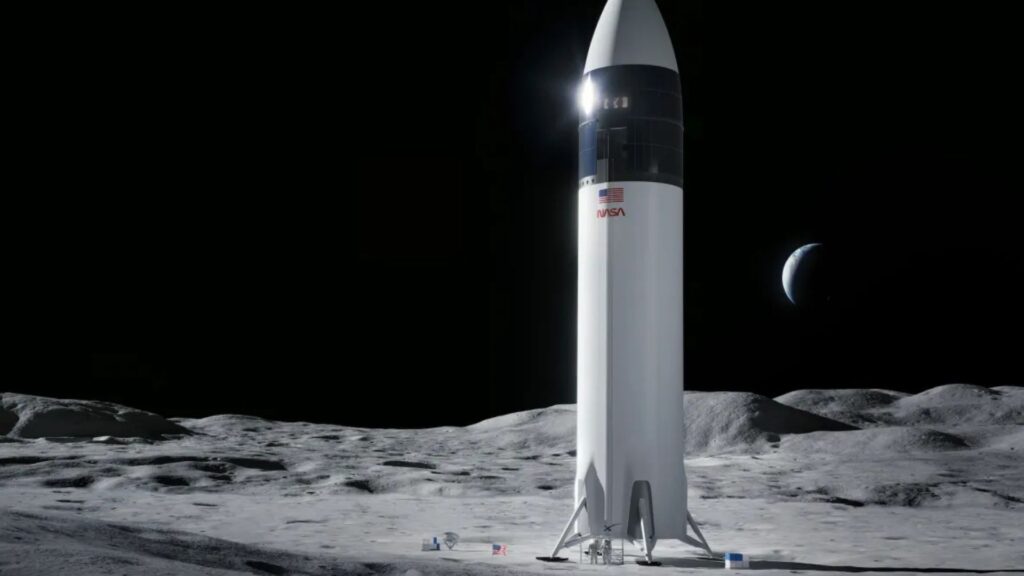
NASA’s ambitious return to the Moon through its Artemis program faces a potential multi-year setback, according to the agency’s Aerospace Safety Advisory Panel. At a public meeting on September 19, panelists expressed deep concerns that SpaceX’s Human Landing System (HLS)—a modified Starship spacecraft designated to ferry astronauts from lunar orbit to the surface—may not be ready in time to meet the current 2027 target for Artemis III. This warning adds urgency to an already complex schedule fraught with technical hurdles, budget pressures, and mounting geopolitical competition.
Unprecedented Technical Challenges
Central to the panel’s caution is the requirement for cryogenic propellant transfer in space, a capability never demonstrated at the scale necessary for lunar missions. Under the Artemis architecture, an expendable Starship “tanker” must rendezvous with the HLS in low-Earth orbit, pump hundreds of metric tons of super-cold liquid methane and liquid oxygen, then send both vehicles on a trajectory toward lunar orbit for crew transfer. Panel member Paul Hill characterized the timeline for developing and validating this orbital refueling maneuver as “significantly challenged,” warning that delays in any demonstration could cascade into a multi-year slip for the Artemis III landing.
Beyond refueling, the panel highlighted a host of interdependent systems that remain under development. These include Starship’s integrated heatshield for reentry through Earth’s atmosphere after deep-space operations, precision lunar landing sensors, and the life-support and avionics modifications unique to the crewed HLS variant. Bill Bray, another panel member, noted that the path for Artemis III “is uncertain and a little murky,” given the unproven flight heritage of Starship on critical mission phases such as trans-lunar injection and descent guidance.
Spacesuit and Surface Systems Risks
Complementing the HLS concerns are uncertainties surrounding the xEMU extravehicular mobility unit (spacesuit) and surface infrastructure. NASA’s next-generation xEMUs must provide greater mobility, dust mitigation, and longer operational life on the lunar south pole’s rugged terrain. However, development delays and unforeseen technical setbacks in life-support integration or test-article failures could add months of schedule margin, further jeopardizing the launch date. The panel cautioned that even if Starship were ready on time, insufficient suit availability would force NASA to postpone crewed lunar surface activities until the hardware meets stringent safety criteria.
Cumulative Program Delays and Budget Implications
Artemis III is already drifting. In December 2024, NASA officially moved the mission to “no earlier than 2027” after identifying defects in the Orion spacecraft’s heat shield during post-flight analysis of Artemis I. Meanwhile, Artemis II—a crewed lunar flyby—is now slated for April 2026, pushing back the date by several months. These shifts have ripple effects on NASA’s budget profile: each slip reduces the number of funded flight opportunities within congressional appropriation cycles and increases the risk of cost overruns. Previous estimates projected that each one-year delay in Artemis III could incur an additional $1–2 billion in program costs, placing added strain on NASA’s Exploration Systems Development account.
International and Commercial Partnerships at Stake
The Artemis program is a hallmark of U.S. leadership in space exploration, underpinned by the Artemis Accords—a set of bilateral agreements with partner nations including Canada, Japan, Italy, and Australia. Delays in the flagship Moon landing may erode confidence among international collaborators poised to contribute habitat modules, rover platforms, and scientific payloads. Commercial partners like SpaceX and Blue Origin also stand to face contractual penalties or renegotiations if launch and landing windows shift, complicating NASA’s broader objectives of establishing a sustainable lunar presence by the end of the decade.
Geopolitical Competition Intensifies
The panel’s cautionary message comes at a time of heightened global competition. China has publicly reaffirmed its goal of landing astronauts on the Moon before 2030, supported by a separate cadre of international collaborators.
Former NASA Administrator Jim Bridenstine warned lawmakers that “unless something changes, it is highly unlikely the United States will beat China’s projected timeline” to the lunar surface, raising concerns about strategic advantage over the Moon’s water-ice–rich south polar regions. NASA Administrator Bill Nelson has countered by urging “double-down” efforts from both commercial and international partners to keep the Artemis schedule alive, emphasizing that a successful 2027 landing remains the program’s top priority.
SpaceX’s Progress and Remaining Hurdles
Despite the panel’s warnings, the advisory group acknowledged SpaceX’s remarkable achievements in rocket reusability and rapid iteration. Since 2023, Starship has flown ten test missions, each demonstrating incremental improvements in booster recovery, payload integration, and flight-control software.
SpaceX’s willingness to pioneer a fully reusable super-heavy launch architecture has driven down launch costs and advanced technical know-how. However, the transition from suborbital and orbital test flights to fully integrated deep-space operations is nontrivial, especially when human lives and multi-billion-dollar spacecraft are on the line.
Toward a Path Forward
To mitigate delays, the panel recommended accelerated ground testing of cryogenic transfer systems, increased funding for parallel suit development, and contingency planning for alternate HLS providers should SpaceX’s schedule slip beyond allowable margins. NASA’s capacity to manage risk will hinge on decisive leadership, stable budgets, and transparent communication with congressional overseers and international stakeholders.
With Artemis III’s goal of landing the first woman and next man on the Moon by 2027 hanging in the balance, the coming months will prove pivotal. Success will require not only technological prowess but also robust risk management and coordinated effort across government, industry, and global partners. Absent significant breakthroughs on cryogenic propellant transfer and suit readiness, the dream of a triumphant lunar return in 2027 may be deferred by years—reshaping the trajectory of human space exploration well beyond this decade.











